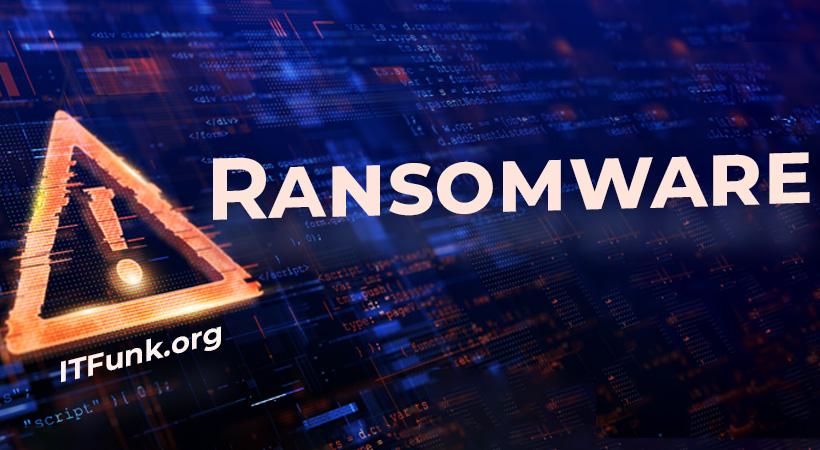In the intricate landscape of cybersecurity, the GoTiS Ransomware emerges as a formidable threat, wielding the power to encrypt files and hold them hostage until a ransom is paid. This article will dissect the modus operandi of GoTiS, explore its consequences, and underscore the importance of implementing robust security measures. The ransom note, its demands, and suggested actions will be scrutinized, providing users with insights to counteract this perilous digital adversary.
The GoTiS Ransomware: Anatomy of the Attack
GoTiS, a member of the notorious Xorist Ransomware family, orchestrates its attack by encrypting files on the compromised device and appending a ‘.GoTiS’ extension to their filenames. This ruthless act renders the files inaccessible, causing considerable distress to victims who find their once-accessible data now under digital lock and key.
The ransom note left by GoTiS is strategically placed on the victim’s desktop wallpaper, in a pop-up window, and within a text file named ‘HOW TO DECRYPT FILES.txt.’ The note provides explicit details about the encryption process, the demanded ransom, and instructions on how to make the payment to the attackers. Importantly, the ransom amount is set at 0.04 BTC (Bitcoin), reflecting the cybercriminals’ awareness of the cryptocurrency’s potential for anonymity.
The Consequences: Decrypt or Pay the Price
The encryption process employed by GoTiS leaves victims with a stark choice: either lose access to their valuable files indefinitely or succumb to the ransom demands. The ransom note explicitly states that upon the successful transfer of the Bitcoins, victims are to initiate contact with the attackers to receive the promised decryption tools. However, history has shown that compliance with these demands doesn’t guarantee the return of files, and victims may find themselves with empty pockets and no resolution to their data hostage situation.
Security experts universally advise against paying ransoms. Not only does this financially support illegal activities, but there is also no assurance that the cybercriminals will uphold their end of the bargain. The unethical nature of ransomware attacks is underscored by the fact that paying the ransom contributes to the perpetuation of criminal activities on the internet.
Detection Names
To combat the GoTiS Ransomware, it is crucial for users to be equipped with the right tools and knowledge. Reputable antivirus software can play a pivotal role in detecting and neutralizing this threat. Here are some of the detection names for GoTiS across different antivirus programs:
- Windows Defender: Ransom:Win32/Xorist!gbi
- Symantec: Trojan.Gen.MBT
- McAfee: Artemis!6F77E19B5703
- Kaspersky: Trojan.Win32.DelShad.ab
- Bitdefender: Trojan.GenericKD.34349958
These signatures aid in the identification and removal of the GoTiS Ransomware. Users are strongly advised to keep their antivirus software updated to ensure that their systems are protected against the latest threats.
The Ransom Note
The ransom note is displayed on the infected system’s desktop, on a pop-up window, and in a text file, found in every folder with encrypted files, named ‘HOW TO DECRYPT FILES.txt’.
Underneath we provide the full text of the ransom note left on the victims’ system by GoTiS Ransomware.
‘Hello,
All your files have been encrypted.
To decrypt them, you must make a payment of 0.04 bitcoins.
Ensure that you send the 0.04 bitcoins to the following address:
bc1qygn239pmpswtge00x60ultpp6wymht64ggf5mk
If you don’t own bitcoin, you can easily purchase it from the following sites:
www.coinmama.com
www.bitpanda.com
www.localbitcoins.com
www.paxful.com
For a more extensive list, please visit:
hxxps://bitcoin.org/en/exchanges
Once the bitcoin has been sent, contact me at either of these email addresses:
gotis1@skiff.com
gotis@onionmail.org
Use this subject: GOTIS004-ID-PCIS05301004
For a good communication experience,
kindly create an account on skiff.com and get in touch with us.
After the payment is confirmed, you will receive the decryptor and decryption keys.
Additionally, you will be provided with information on how to safeguard against future ransomware attacks,
including details about the security vulnerability through which we gained access.’
Full text of the ransom note of the GoTiS ransomware.
Crucial Security Measures for Defense
To fortify against malware threats like GoTiS, users should adopt the following security measures:
- Regular Data Backups: Implement routine and secure data backup strategies to mitigate the impact of an attack.
- Anti-Malware Software: Install and regularly update reputable anti-malware software for real-time scanning and protection.
- Operating System and Software Updates: Regularly update your device’s operating system and installed software to patch vulnerabilities exploited by malware.
- Caution with Emails and Downloads: Exercise vigilance when dealing with emails from unknown sources and avoid downloading attachments from unverified emails.
- Use a Firewall: Enable a firewall to monitor and control network traffic, acting as a barrier against potential threats.
Conclusion
The GoTiS Ransomware stands as a stark reminder of the evolving landscape of cyber threats. Its coercive tactics underscore the importance of proactive cybersecurity measures. By understanding the anatomy of such attacks, remaining vigilant, and implementing robust security practices, users can fortify their digital defenses and navigate the online realm with increased resilience. Remember, prevention is the key to safeguarding your digital world from the clutches of malicious software like GoTiS.





